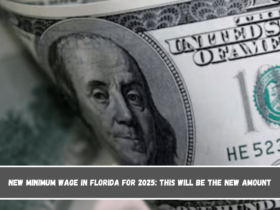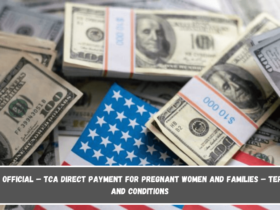One of the main ideas that Kamala Harris, the Democratic presidential candidate, has put forward to help low-income families is the Child Tax Credit. The Tax Policy Center (TPC) says that these programs, which include tax breaks for families with children, low-income workers, and first-time homebuyers, will cause the government to get about $2 trillion less in tax receipts over the next ten years.
The Tax Policy Center (TPC) says that at least one of these tax changes would be good for over 70% of families making less than $113,000. These are the lowest-income households. In 2025, families could see their taxes go down by an average of $750. This would save them 0.7% of their income after taxes.
What Kamala Harris’s child tax credit proposals include
The Child Tax Credit increase is one of Harris’s most important ideas. At the moment, this credit gives up to $2,000 per child. With the new plan, the amount could go up to $6,000 per child, based on their age. Harris has also suggested making the Earned Income Tax Credit (EITC) bigger. This would help low-income workers who don’t live with their kids the most.
Harris has also suggested that first-time homebuyers get a tax credit of up to $25,000 that they can get back. Harris hasn’t said much about how this credit would work, but the TPC has made a similar version based on Biden administration plans that offered a tax credit to people who bought their first house.
The cost of the measures
According to estimates from the Tax Policy Center, expanding the Child Tax Credit would be the most expensive of the three ideas. It could cost the federal government about $1.6 trillion in tax income between 2025 and 2034. It will cost about $140 billion to expand the Earned Income Tax Credit. On the other hand, the tax credit for first-time renters will cost the federal government about $300 billion.
The cost of the homebuyer credit might go up even more if the planned housing sector measures make more people want to buy homes, which would raise the market’s demand.

Who would benefit the most
Family units with lower wages would benefit the most from these tax plans. For instance, people making $33,000 or less could see a 3.6% rise in their income after taxes, which would add up to an extra $700 a year in 2025. Households with better incomes, on the other hand, would see much smaller benefits.
Families in the top 20% income bracket would receive an average tax cut of only 0.1%, equivalent to about $350. Additionally, the wealthiest 1% would receive virtually no tax benefit.
Specific benefits for families with children
Families with young children are the main goal of the Child Tax Credit’s growth. From what the TPC study shows, more than 75% of families with young children would see their tax bills go down, saving them an average of $2,800.
Other groups, like low-income seniors, would gain much less, since they are not as likely to have young children or be buying a home for the first time. This would mean that only about 7% of low-income seniors would get a tax cut, which would be about $150 on average.
Overall impact on households
Just over a quarter of American households would gain from at least one of these tax cuts. But those who do qualify would see big drops in their taxes, especially low-income families with kids. Harris’s ideas are meant to help people who need it the most with their finances. On the other hand, households with better incomes would see a much smaller change in their taxes.











Leave a Reply